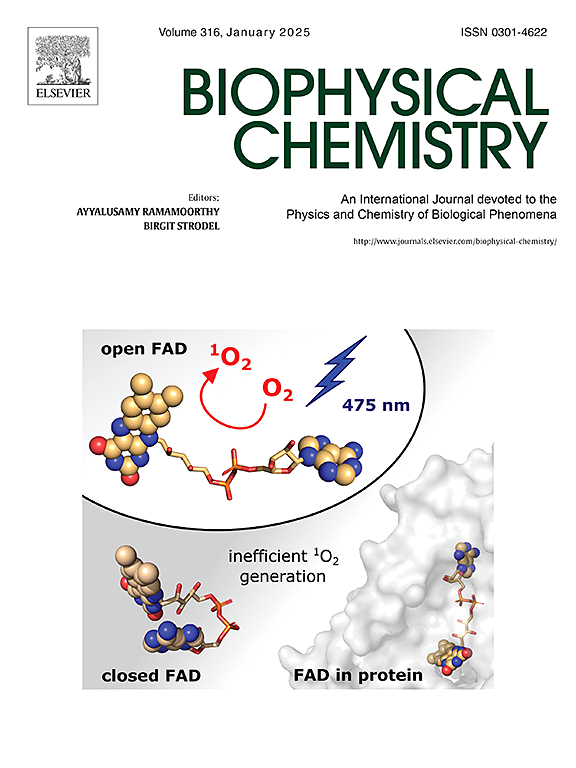绘制蛋白质折叠的构象景观:Trp-Cage迷你蛋白质的降维和聚类技术的基准。
IF 2.2
3区 生物学
Q2 BIOCHEMISTRY & MOLECULAR BIOLOGY
引用次数: 0
摘要
由于蛋白质的高维性和内在复杂性,蛋白质构象景观的定量表征是一项极具计算挑战性的任务。在本研究中,我们对几种广泛使用的降维和聚类方法进行了系统性的基准测试,以分析 Trp 笼小蛋白的构象状态,这是一种折叠动力学记录详实的模型系统。我们采用了包括主成分分析(PCA)、时滞独立成分分析(TICA)和变异自动编码器(VAE)在内的降维技术,将高维自由能景观投射到二维空间,以实现可视化。此外,K-means、分层聚类、HDBSCAN 和高斯混杂模型(GMM)等聚类方法被用来直接识别高维空间中的离散构象状态。我们的研究结果表明,基于密度的聚类方法,尤其是 HDBSCAN,能提供自由能最小值的物理意义表征。在强调每种方法的优势和局限性的同时,我们的研究还强调,没有任何一种技术是捕捉复杂折叠途径的最佳方法,这就强调了在生物分子模拟中谨慎选择和解释计算方法的必要性。这些见解将有助于完善现有的蛋白质构象景观分析工具,从而加深对折叠机制和中间状态的理解。本文章由计算机程序翻译,如有差异,请以英文原文为准。

Mapping conformational landscape in protein folding: Benchmarking dimensionality reduction and clustering techniques on the Trp-Cage mini-protein
Quantitative characterization of protein conformational landscapes is a computationally challenging task due to their high dimensionality and inherent complexity. In this study, we systematically benchmark several widely used dimensionality reduction and clustering methods to analyze the conformational states of the Trp-Cage mini-protein, a model system with well-documented folding dynamics. Dimensionality reduction techniques, including Principal Component Analysis (PCA), Time-lagged Independent Component Analysis (TICA), and Variational Autoencoders (VAE), were employed to project the high-dimensional free energy landscape onto 2D spaces for visualization. Additionally, clustering methods such as K-means, hierarchical clustering, HDBSCAN, and Gaussian Mixture Models (GMM) were used to identify discrete conformational states directly in the high-dimensional space. Our findings reveal that density-based clustering approaches, particularly HDBSCAN, provide physically meaningful representations of free energy minima. While highlighting the strengths and limitations of each method, our study underscores that no single technique is universally optimal for capturing the complex folding pathways, emphasizing the necessity for careful selection and interpretation of computational methods in biomolecular simulations. These insights will contribute to refining the available tools for analyzing protein conformational landscapes, enabling a deeper understanding of folding mechanisms and intermediate states.
求助全文
通过发布文献求助,成功后即可免费获取论文全文。
去求助
来源期刊

Biophysical chemistry
生物-生化与分子生物学
CiteScore
6.10
自引率
10.50%
发文量
121
审稿时长
20 days
期刊介绍:
Biophysical Chemistry publishes original work and reviews in the areas of chemistry and physics directly impacting biological phenomena. Quantitative analysis of the properties of biological macromolecules, biologically active molecules, macromolecular assemblies and cell components in terms of kinetics, thermodynamics, spatio-temporal organization, NMR and X-ray structural biology, as well as single-molecule detection represent a major focus of the journal. Theoretical and computational treatments of biomacromolecular systems, macromolecular interactions, regulatory control and systems biology are also of interest to the journal.
 求助内容:
求助内容: 应助结果提醒方式:
应助结果提醒方式:


